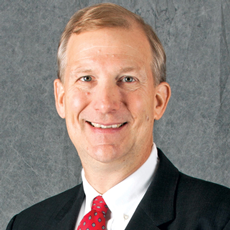
The tributes to former First Lady Barbara Bush will wash over the media landscape for at least a few news cycles, as well they should. But then, unfortunately, the world will go back to its twisted ways and the airwaves will be dominated by tantrums, tweets and twits.
What a shame. The passing of the plainspoken 92-year-old who was adored by most of the nation, regardless of political party, is sad. And so is the compressed window for the extra round of good she was doing by going public with her decision to seek “comfort” or palliative care.
It was just Monday when the Bush family announced that Barbara would no longer want aggressive medical care or further hospital treatment. The announcement set off a debate in some circles. While end-of-life specialists and palliative care proponents hailed her candor and grace, others decried what they saw as an immoral, premature surrender.
Among other things, it offered certain long-term care providers an opportunity to shine. Palliative and hospice care have a tough sales job. But it’s made much easier when a celebrity puts a face on it and lends credence to it.
That is just what Mrs. Bush did — for about 36 hours.
People like Elaine Healy will not forget. Nor does she want fellow caregivers nor the public to forget. Perhaps purely by coincidence, the Bushes made their palliative care wishes known at the start of the week that recognizes National Heathcare Decision Day.
“Barbara Bush is shining a light on end of life care, alternatives, and decisions,” said Healy about eight hours before Bush died Tuesday night.
Bush’s very public decision can be a catalyst for providers to talk about end-of-life issues with loved ones and to make their wishes known — long before the end actually arrives, Healy noted. As a geriatrician and the vice president of medical affairs at United Hebrew of New Rochelle, New York, she should know. She oversees United Hebrew’s Hospice and Palliative Care program and told me Bush offered a unique opportunity to put palliative care in a favorable light.
“She’s like a mother figure to us all, the ‘omni-mom,’” she noted. “We’re always interested in getting the word out and she certainly did that, putting it front and center.”
Providers themselves now need to be experts on palliative care issues. In doing so, they can hearten and assure the public. Treatment that is comfort-focused is still treatment. It’s a prime example of an individualized plan of care. Goals simply are different.
“We should be champions of advance care planning. It should be woven into the fabric of our care planning processes,” Healy told me. “It’s a difficult subject to discuss for obvious reasons, and perhaps in many places it’s not embraced as it might be.”
Bush’s actions figuratively had the role model once again standing up and speaking out in her dying hours. The least long-term care professionals can do now is become standard bearers, initiating the tough conversations that so often need to be had.
Follow Editor James M. Berklan @JimBerklan.




